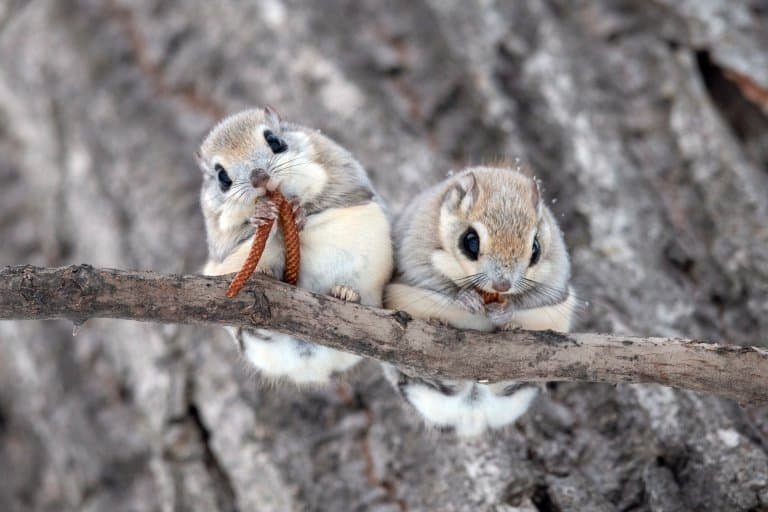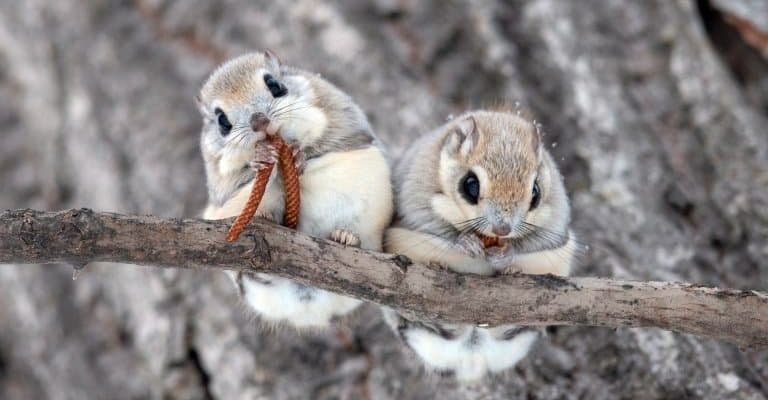
The truth is, the conservation status of flying squirrels varies depending on the species and their specific habitats. Some are thriving, while others are facing significant threats. It’s a bit like a mixed bag of nuts—some are fresh and full of energy, while others are starting to lose their crunch. Let’s take a closer look at what’s happening with flying squirrels around the world and why it matters.
Understanding Flying Squirrels
Flying squirrels aren’t actually flying in the traditional sense. Instead, they glide through the air using a special membrane called a patagium. This unique adaptation allows them to cover impressive distances—sometimes up to 150 feet! Imagine soaring through the trees like a superhero, effortlessly gliding from one branch to another to avoid predators or find food.
There are about 50 species of flying squirrels spread across the globe, primarily found in North America, Asia, and parts of Africa. Some are well-known, like the Southern Flying Squirrel, while others are lesser-known, like the Indian Flying Squirrel. Each species has its own unique traits and behaviors, making them a diverse group worth studying.
Flying squirrels thrive in forests, especially ones with plenty of trees and old growth, which provide the right mix of food and nesting sites. They primarily feed on fruits, nuts, and even flowers. A healthy habitat is crucial for their survival, just like a cozy home is essential for a comfy night in.
Current Conservation Status
The conservation status of flying squirrels varies widely. Some species, like the Northern Flying Squirrel, are listed as threatened under the U.S. Endangered Species Act. This means their populations are declining due to habitat loss and fragmentation, often caused by logging and urban development. When their homes are destroyed, flying squirrels face tough challenges in finding food and mates.
On the other hand, some species like the Southern Flying Squirrel are doing relatively well and have stable populations. This is often thanks to their adaptability to suburban environments, where they can find food and shelter in backyards filled with trees. It’s a good reminder that while some species are in trouble, others can adapt and thrive.
So, here’s the thing: knowing the conservation status of these adorable gliders can help inform conservation efforts and policies. By identifying which species are at risk, conservationists can focus on protecting their habitats and ensuring these creatures have a chance to flourish.
Threats to Flying Squirrel Populations
Flying squirrels face a few significant threats that can impact their survival. Let me explain some of the biggest ones:
- Habitat Loss: This is the top concern. When forests are clear-cut for timber or developed into urban areas, flying squirrels lose their homes. Without enough trees to glide between, their chances of survival drop dramatically.
- Climate Change: Changes in temperature and weather patterns can affect their food sources. For instance, warmer winters might disrupt the timing of food availability and their breeding cycles.
- Predation: Increased urbanization often leads to more predators, like cats or raccoons, encroaching on their territories. This can put added pressure on flying squirrel populations, especially in fragmented habitats.
Each of these threats contributes to the overall decline in certain species, making conservation efforts more pressing than ever. Addressing these threats will be essential for ensuring that future generations can still enjoy the sight of flying squirrels gliding through their natural habitats.
Conservation Efforts and Initiatives
Many organizations and researchers are working hard to protect flying squirrels and their habitats. These efforts can range from local habitat restoration projects to broader legislative initiatives aimed at preserving forests. Here are some key strategies that are making an impact:
- Habitat Restoration: Restoring degraded forest habitats can help bolster flying squirrel populations. This involves planting native trees and creating wildlife corridors that allow them to move freely between areas.
- Research and Monitoring: Scientists are conducting studies to better understand flying squirrel populations and their needs. By monitoring their health and population numbers, conservationists can tailor their efforts more effectively.
- Public Awareness Campaigns: Educating the public about the importance of flying squirrels can help garner support for conservation initiatives. When communities understand how vital these creatures are for their ecosystems, they’re more likely to get involved.
These combined efforts can make a significant difference in the lives of flying squirrels, helping to ensure their survival in an ever-changing world.
What You Can Do to Help
Feeling inspired to help flying squirrels? There are several easy ways you can make a difference, even from your own home:
- Create a Wildlife-Friendly Yard: Plant native trees and bushes to provide food and shelter for flying squirrels. Avoid using pesticides that can harm wildlife.
- Support Conservation Organizations: Consider donating to organizations that focus on habitat preservation and species protection. Your contributions can go a long way in supporting local projects.
- Spread the Word: Share what you’ve learned about flying squirrels with friends and family. The more people know, the more change can happen.
Every small action adds up. Engaging with your community and advocating for wildlife can help create a better environment for flying squirrels and many other species in need.
So, are flying squirrels endangered? The answer isn’t straightforward, as it depends on the species and their specific circumstances. What’s clear, though, is that some flying squirrel populations are under threat, while others are adapting well to change. Understanding their conservation status and the various threats they face is crucial for their future.
Ultimately, by supporting habitat restoration and conservation initiatives, we can play an essential role in ensuring flying squirrels continue to grace our forests and backyards for generations to come. Let’s keep the conversation going and work together to protect these extraordinary animals. After all, wouldn’t it be a shame to lose such a remarkable part of our natural world?

